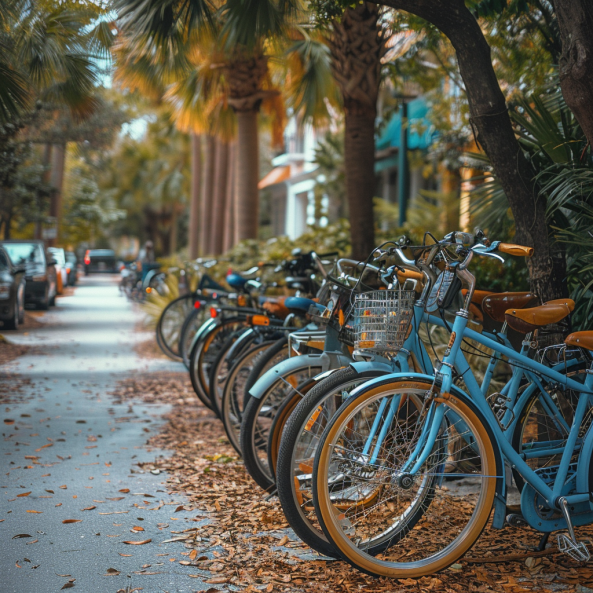As urban areas worldwide strive for sustainability and healthier lifestyles, cycling has emerged as a key component of city planning and culture. Bike-friendly cities not only promote environmental conservation but also offer a multitude of benefits to residents and visitors alike. In this blog post, we’ll explore the characteristics of bike-friendly cities, highlight some exemplary urban areas, and offer tips for moving to a city with a vibrant cycling culture.
Characteristics of Bike-Friendly Cities
- Extensive Bike Lane Networks: Bike-friendly cities boast well-connected and safe bike lanes that encourage people to cycle for commuting and leisure. These lanes are often separated from vehicle traffic, ensuring safety for cyclists.
- Bike-Sharing Programs: Many bike-friendly cities offer bike-sharing services, making cycling accessible to everyone, even those who don’t own a bike.
- Cycling Infrastructure: Beyond bike lanes, these cities provide ample bike racks, repair stations, and other amenities that cater to cyclists’ needs.
- Safety Measures and Education: Bike-friendly cities prioritize cyclist safety through traffic laws, education programs, and awareness campaigns.
- Community and Culture: A strong cycling community and culture, with events, clubs, and advocacy groups, are key indicators of a bike-friendly city.
Exemplary Bike-Friendly Cities
- Amsterdam, Netherlands: Often hailed as the cycling capital of the world, Amsterdam boasts an extensive network of bike lanes, ample bike parking, and a culture that embraces cycling as a way of life.
- Copenhagen, Denmark: Known for its innovative bike infrastructure, such as bicycle bridges and superhighways, Copenhagen has set the standard for urban cycling.
- Portland, Oregon, USA: With its comprehensive network of bike lanes, bike-friendly public transportation, and vibrant cycling community, Portland is a leading bike-friendly city in the United States.
- Utrecht, Netherlands: This Dutch city is renowned for its extensive cycling network, innovative bike parking solutions, and a commitment to prioritizing cyclists in urban planning.
- Boulder, Colorado, USA: Boulder’s scenic bike paths, dedicated cycling lanes, and strong community support make it a haven for cyclists.
Tips for Moving to a Bike-Friendly City
- Research Cycling Infrastructure: Before moving, explore the city’s bike lanes, bike-sharing programs, and other cycling amenities to ensure it meets your needs.
- Choose a Bike-Friendly Neighborhood: Look for areas with easy access to bike lanes, parks, and cycling-friendly amenities.
- Invest in a Quality Bike: A reliable bike suited to your city’s terrain and your personal needs will make your cycling experience more enjoyable.
- Learn Local Cycling Laws: Familiarize yourself with the city’s cycling regulations to ensure safety and compliance.
- Get Involved in the Cycling Community: Join local cycling groups, participate in events, and connect with fellow cyclists to fully immerse yourself in the city’s cycling culture.
Safebound Moving & Storage: Your Partner in Bike-Friendly Moves
At Safebound Moving & Storage, we understand the unique needs of cyclists moving to bike-friendly cities. Our team is equipped to handle your bike and cycling gear with care, ensuring they arrive safely at your new home. Whether you’re moving to the cycling haven of Amsterdam or the bike-friendly streets of Portland, we’re here to make your transition smooth and stress-free.
In conclusion, bike-friendly cities offer a sustainable, healthy, and enjoyable way of life. By embracing cycling culture and infrastructure, these urban areas pave the way for a greener, more connected future. If you’re considering a move to a bike-friendly city, Safebound Moving & Storage is here to support you every pedal of the way.





